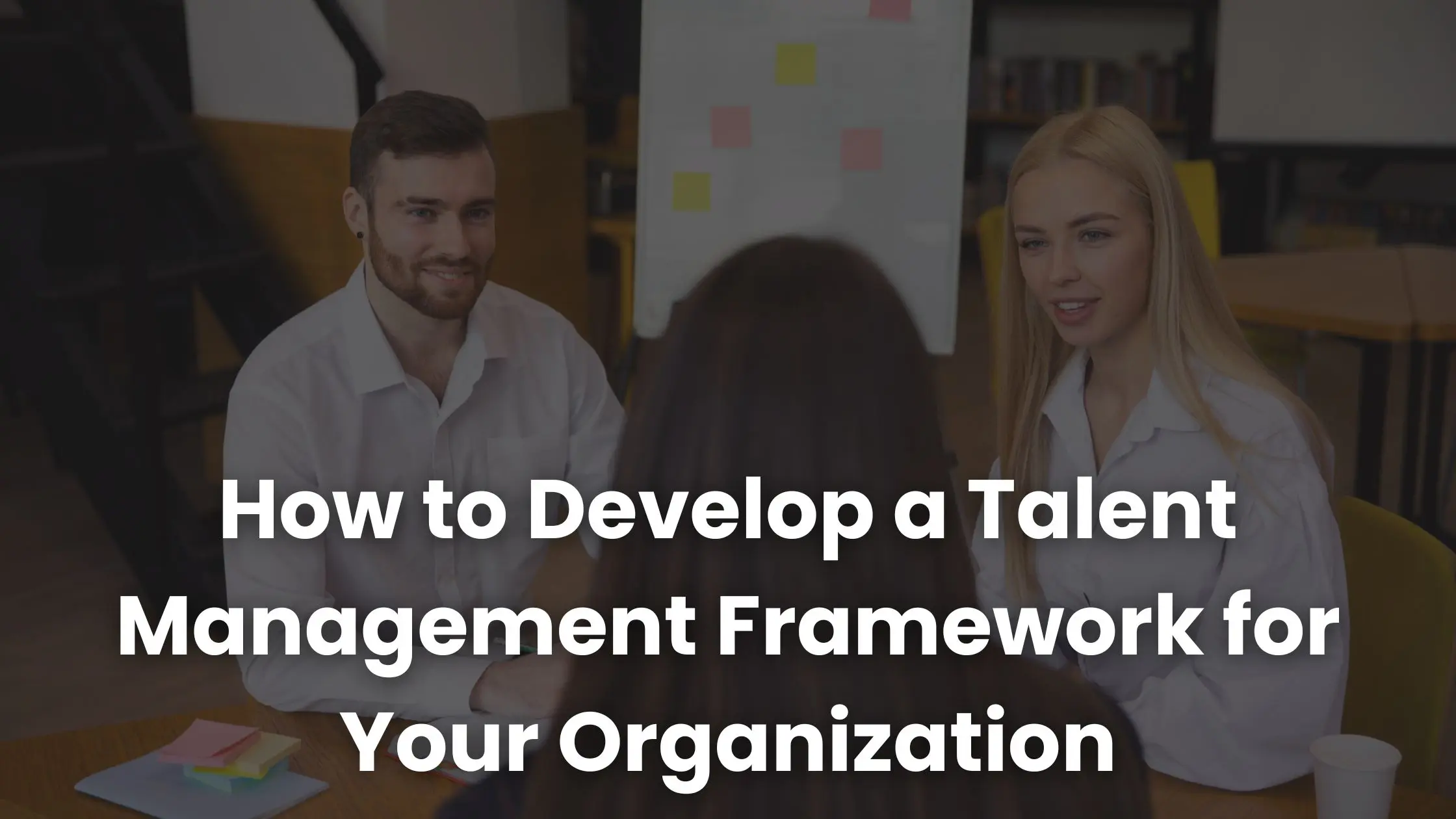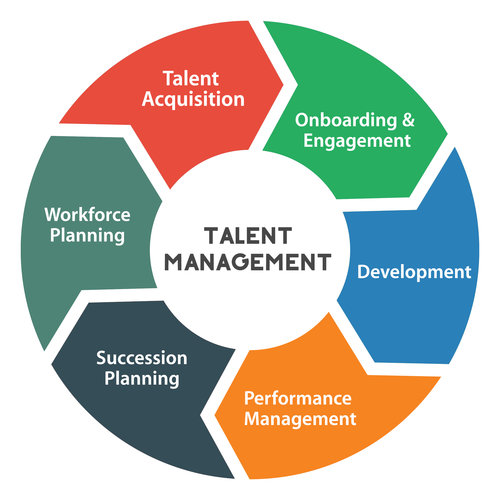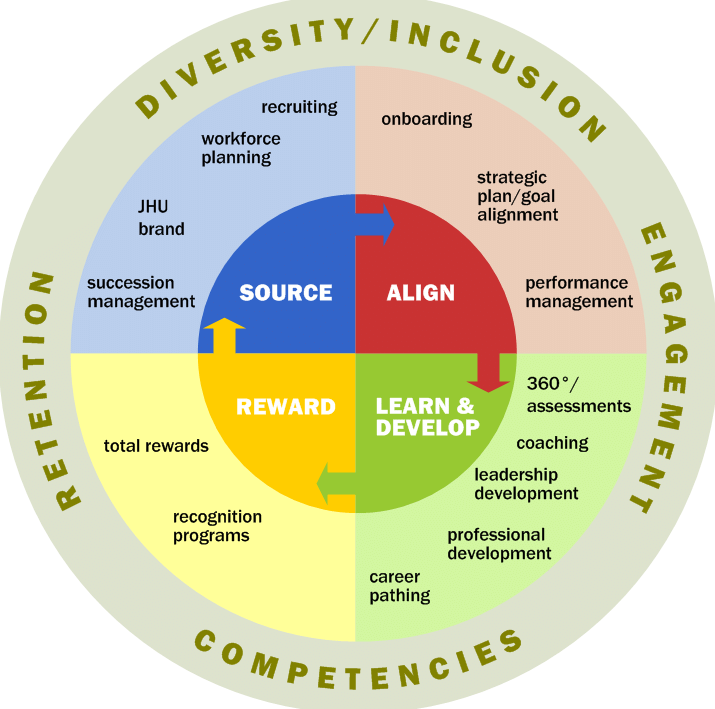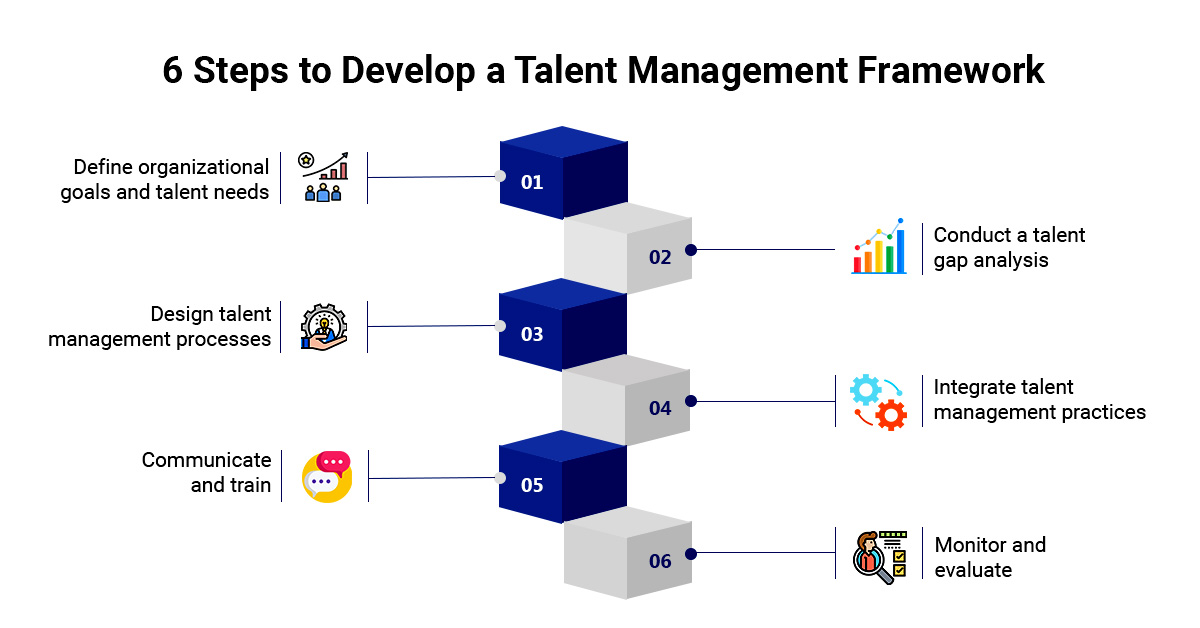How to Develop a Talent Management Framework for Your Organization
Build a talent management framework that links hiring, development, and retention to business goals. Learn practical steps and strategies for improved performance.
Build a talent management framework that links hiring, development, and retention to business goals. Learn practical steps and strategies for improved performance.

Every company says people are its greatest asset, but few can explain how they actually manage that asset. When growth picks up or priorities shift, most organizations fall back on instinct: hire fast, plug gaps, and repeat. The problem? That doesn't scale.
A clear talent management framework doesn’t just help you manage people; it helps you make better decisions about growth, capability, and direction. When you have a structure in place, you’re not reacting to gaps or guessing what comes next. You’re building with intent.
In this guide, we’ll walk through how to design a framework that links your people strategy to your business goals so your team doesn’t just expand; it evolves in ways that actually move the business forward.
Most teams don’t fail because they hire the wrong people. They fail because they have no plan for what comes next. A talent management framework gives you a map of what to do after the hire when the real work begins.
A good framework links all key talent processes to a shared set of business goals. It helps you spot skill gaps early, align performance expectations, and create development pathways that support both individual growth and organizational priorities. Without it, teams often rely on inconsistent practices that lead to missed opportunities.

The framework should fit your stage of growth. A scaling startup may need fast, flexible steps. An enterprise might require deep role mapping and long-term leadership plans. Either way, the purpose stays the same: make talent decisions that are consistent, deliberate, and tied to results.
Without one, you rely on instinct and luck. With one, you get structure, accountability, and a clear view of how your people drive the business forward.
Without a well-defined talent management framework, organizations often default to reactive decisions such as hiring late, promoting inconsistently, or launching learning programs that don't solve actual capability gaps. These oversights lead to poor retention, misused resources, and stalled growth.
Here's what a framework helps you do more effectively:
HR teams can also use platforms like Coursebox to put frameworks into action by structuring onboarding content, mapping role-based learning, and tracking skill development across teams.
Ultimately, a talent management framework transforms how organizations manage people. It reduces guesswork, builds alignment, and enables the workforce to grow in sync with the business.

Every talent management framework should reflect the organization's size, structure, and goals, but certain components are essential regardless of context. These core elements create a system that's both practical to implement and adaptable over time.
This is the starting point. Workforce planning identifies current capabilities, projects, and future needs and flags gaps. It ensures you're not hiring reactively or developing talent that doesn't align with business priorities. This step should involve cross-functional input, not just HR, to reflect a broader strategic direction.
Your hiring process should be directly informed by your framework. That means defining role requirements beyond job descriptions, considering culture fit, long-term potential, and the competencies needed for internal mobility. Standardized interview and evaluation methods reduce bias and make hiring decisions more consistent.
A strong onboarding process connects new hires to company values, expectations, and performance goals early. This helps shorten ramp-up time and improves retention. Clear handoffs from recruiting to onboarding ensure new employees aren't left navigating systems or expectations on their own.
This involves more than annual reviews. A framework should support ongoing feedback, clear goal-setting, and development-focused conversations. It should also define what high performance looks like and how it's rewarded, tracked, and supported throughout the organization.
Training shouldn't be disconnected from business needs. A strong framework links L&D to identified skills gaps and future leadership roles. It outlines formal learning paths and supports informal learning through mentorship, coaching, or internal content platforms.
Succession planning helps reduce disruption by preparing people to step into key roles. Identify employees with long-term potential and give them structured development opportunities. Focus on role-specific skills, clear timelines, and realistic readiness assessments to guide the process.
Employees are more likely to stay when they understand their growth options. Define how roles progress laterally and vertically and connect those paths to training or performance goals. Encourage managers to discuss mobility regularly and track which employees are ready for new challenges.
Your compensation and recognition practices should align with your broader talent strategy. That means defining how and why employees are rewarded, whether through salary, benefits, promotions, or non-monetary recognition. These systems should reflect performance, development progress, and business contribution, not just tenure or role.
Clear criteria for advancement and consistent messaging across teams help build transparency and trust. When recognition is tied to measurable outcomes and applied fairly, it reinforces key behaviors and supports retention without relying on guesswork.

Creating a talent management framework takes more than drafting a model and sharing it with HR. It requires input from leadership, alignment with business strategy, and ongoing refinement based on real performance and workforce data.
While the framework itself may vary by organization, the process of building one follows several consistent steps.
Start by identifying your organization's strategic priorities. Whether you're expanding into new markets or shifting to a subscription-based model, the framework should reflect those goals. This ensures that every talent decision contributes to long-term outcomes.
A framework built solely within HR is unlikely to gain traction. Involve executives and department heads from the beginning to ensure alignment and secure long-term support. Their input helps tailor the framework to actual business needs.
Conduct a gap analysis of existing processes. Review hiring practices, performance evaluations, turnover trends, and succession plans.
Identify where inconsistencies or inefficiencies exist and gather feedback from managers and employees to understand pain points.
Decide which core areas your framework will include, such as workforce planning, development, performance management, and so on. Be specific about what each part covers and how they connect. This step also sets expectations for measurement and accountability.
Choose tools that support each part of your framework. For example, use an LMS like Coursebox to deliver learning paths or a performance system to capture feedback and goals. Technology should reinforce, not complicate, your structure.
Test the framework with a smaller team or department before rolling it out company-wide. Use this phase to collect data, identify friction points, and adjust workflows. A strong framework evolves with feedback and use.
The best-designed system fails if managers don't use it consistently. Offer training on how to have development conversations, assign learning, and evaluate performance using the framework. Make tools and guidance easily accessible.
Define KPIs from the outset, such as internal mobility rates, time to productivity, or performance ratings over time. Review results quarterly and adapt the framework as your workforce and business evolve.
Even the best frameworks lose impact if they sit untouched. To keep yours useful and relevant, treat it like a system that evolves with your organization, not a one-time rollout.

If your talent decisions still depend on timing, intuition, or short-term workarounds, a structured framework can change that. It gives you a way to manage hiring, development, and retention with purpose — not just urgency.
What sets effective organizations apart isn't just who they hire; it's how clearly they define growth, how consistently they develop people, and how quickly they adapt. A talent management framework makes those actions repeatable.
Tools like Coursebox help make it practical. They support scalable learning plans, track progress, and keep teams aligned without overcomplicating the process.
Whether you're building from scratch or refining an existing system, now is the right time to make talent strategy part of how your organization works and not just how it responds.
Get started for free today.
